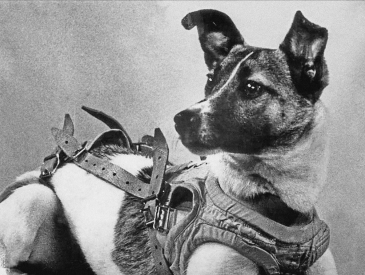On November 3, 1957, a historic moment in space exploration occurred when the Soviet Union launched Sputnik 2, the second spacecraft ever sent into Earth’s orbit. This mission made history not only as a technological achievement but also for another remarkable reason—it marked the first time a living being journeyed into space. That brave traveller was none other than a dog named Laika, a name forever etched in the annals of space exploration.
Laika, whose name means ‘bark’ in Russian, captured the world’s attention during those early days of space exploration. Sadly, her story is one of both triumph and tragedy, as she perished just a few hours after the launch.
Laika was chosen as the occupant of Sputnik 2 due to her gentle disposition and compact size, weighing approximately 6 kilograms. This even-tempered mixed-breed dog, at around two years of age, underwent intensive training to adapt to the rigors of space travel, including confinement and changes in gravity. Her diet was specially formulated, consisting of a jelly-like space food that could be managed in zero-gravity conditions.
The mission’s primary goal was to study the biological effects of space travel and pave the way for human expeditions into space. Laika’s fame even earned her the affectionate nickname “Muttnik.”
Official Soviet accounts initially stated that Laika survived for six or seven days into the mission, after which she was euthanized with poisoned food before her oxygen supply ran out. Sputnik 2 ultimately re-entered Earth’s atmosphere and was destroyed on April 14, 1958.
However, in 2002, Russian scientist Dimitri Malashenkov revealed that these earlier accounts were inaccurate. Laika had, in fact, survived only about five to seven hours after liftoff, succumbing to overheating and panic. Her pulse rate, measured with electrodes, had tripled during takeoff and only slightly decreased during weightlessness. The Soviet scientists had been under intense political pressure to launch Sputnik 2 in time for the celebration of the 40th anniversary of the Bolshevik Revolution, leaving them with insufficient time to perfect life-support systems.
In 2008, a small monument featuring a statue of Laika was unveiled in Moscow.














